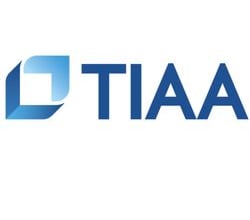So many people have responded to the KonMari Method™ that thrift stores are overflowing with stuff. And people are responding to the idea of only keeping what “sparks joy” to such an extent that people are applying it to everything in their lives, including their businesses. If that annual planning meeting doesn’t spark joy: it’s canceled. Bob in accounting is super annoying: he’s fired.
We only want a joy-filled life! This makes perfect sense. But there’s another Japanese concept that deals with things that no longer sparks joy: Kintsugi. Kintsugi is the “art of precious scars.” When something breaks, you put it back together with gold at the seams. You don’t try to hide the fact that your beautiful bowl broke, but you do make the repaired bowl even better than before because now it’s filled with gold.
So, instead of simply throwing out what is broken and no longer sparks joy, let’s talk about putting things back together with gold to improve your Human Resources department, making it even better than before.
Recognizing a Broken Process
Unlike a bowl, you may not realize when a process, procedure, or policy is broken. But you know something is wrong from how things are trending in the workplace. Employee engagement is down. Turnover is up. Profits are suffering.
To determine which part of the system is broken, you need to talk with people. These people need to trust what you’ll do with the information they give you. Of course, if a lack of trust in HR is what’s broken, then you have to start there. If people constantly tell you that everything is “fine” and they have “no complaints” or only say minor things like, “Well, the cafeteria food could be better,” then you have a pretty good idea that HR is the shattered bowl on the ground.
For other areas, if they trust you, they’ll tell you. And some things you can spot for yourself. Jane received a promotion to Director, and now three people in that department quit. All signs point to Jane as the problem. (Caution: the signs may point that way, but it could be that the previous director allowed bad behavior. Jane could be Kintsugi-ing her own department and fixing things, so don’t react rashly.)
Listen, watch and double check your numbers to find where things are broken. Try to be as objective as possible so that you don’t miss anything.
Putting the Broken Process Back Together
Let’s say the problem is that people don’t trust the Human Resources team. In order to Kintsugi your HR organization, you need to pick up all the pieces and add gold to each one. You can’t just carefully bind two pieces together with gold and superglue the rest. Every piece needs to be examined and fixed. Some likely causes for distrust are:
- Recruiters who ghost candidates (Hiring managers assume recruiters handle the whole process and then when angry candidates reach out to hiring managers, internal trust is destroyed.)
- Employee relations people who send out surveys or ask for suggestions and never report back on what they learned or what changes will be made
- Gossipy HR managers
- HR people who take sides
- Poorly handled benefits
- Business partners that can’t speak in numbers (the language of business)
Take a look at each piece of your smashed HR bowl and consider what you need to do to put add gold and carefully put it back in place.
How to Kintsugi a Person
How well are your managers trained — not in the art of doing, but in the art of managing? Do they go through official training? If they do, you’re ahead of the game. Most managers are thrown into the fire, and it’s not surprising that many of them shatter. Pottery has to be prepared carefully, or it will crack under heat, and your managers will too.
Of course, it’s best to train before they break, but you probably already have broken managers now. The first step is to address it with them and tell them they are broken. Yikes. That sounds horrible, but if you simply send someone to a seminar without saying, “We are sending you to this seminar because you need better management skills,” they may not realize the information isn’t “nice to know” but “need to know.” Give clear feedback on how they need to improve.
You may want to focus a considerable amount of time to train a new manager. Why? Because a trained manager has been fixed with gold. In the end, they will have new skills plus the necessary internal company knowledge. They will become far more valuable than the new hire you recruit to replace them.
Programs and Policy-Based Kintsugi
While sometimes you do need to throw out a policy, sometimes it just needs to be mended. Dress codes written in the 1990s need to be updated and changed. Diversity policies need to reflect the reality of 2019, not 1973. Your sexual harassment policy needs to take into consideration the massive change with the #MeToo movement. Your policies in these areas may be broken and functioning inefficiently, but that doesn’t mean discard them; it means you should fix them.
Look for best practices. See what works for your competitors. Adjust your thinking to 2019. Are visible tattoos really still a problem? Does your sexual harassment policy address managers or staff who are uncomfortable meeting 1:1 with a member of the opposite sex? It needs to.
You don’t have to throw out everything that doesn’t spark joy. Sometimes you can fix it and make it better. So don’t think KonMari, think Kintsugi and your workplace will become beautiful.
Are your employee relations processes broken? Sign up for a demo to learn how we can help!




